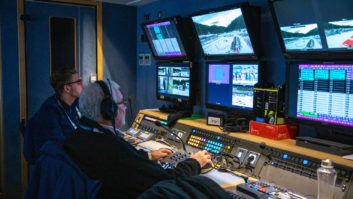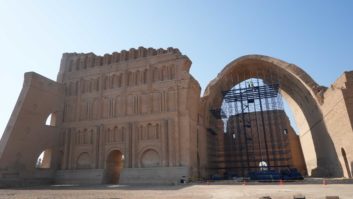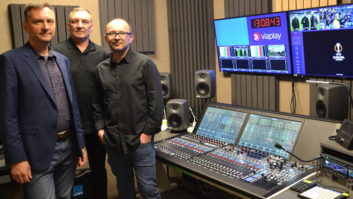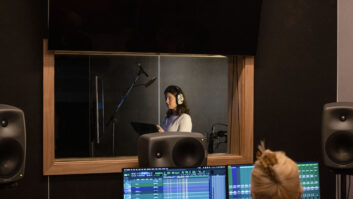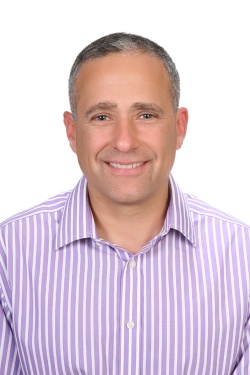
Tedial was selected as MAM supplier for RTVE’s ambitious digitisation project, the largest of its kind in the Spanish-speaking broadcast world.
Two years ago Spain’s national broadcaster Radio Televisión Española (RTVE) announced plans to undertake one of the most ambitious digitisation projects in the broadcast sector and certainly the largest in the Spanish-speaking world. Its aim was to digitise its entire tape archive spanning more than 50 years dating back to the beginning of Spanish television transmission, writes Tedial sales director, Rafael Dubois (pictured).
In time and technology terms this equates to more than 800,000 videotapes containing hundred thousand hours of content in various formats including old video formats (one/two inches, Umatic), Betacam (SP/SX/IMX/Digibeta), D2-D3, and film contents (16/35 mm), to be digitised over a four year period. This material will then be repurposed for various mediums including digital TV and the rtve.es website.
RTVE required a file-based workflow that could automatically digitise and restore material, control tasks, convert digitised material to a common file format and store the material to achieve a seamless solution from ingest and archiving to browsing and delivery. The broadcaster appointed Spanish telecoms giant Telefonica as the systems integrator and technology partner who put out a tender for a MAM supplier who could integrate all the elements involved in the production chain to optimise and automate operational procedures. This included three production sites (two in Madrid and one in Barcelona), a site in Valencia where the material would only be ingested and digitised, and one external service provider where material will also be digitised and incorporated back into its workflow.
After a rigid tender process the MAM contract was awarded to Tedial; we met RTVE’s objectives by defining the digital workflow and associated business processes in conjunction with Telefonica and RTVE. The system, which is in the final stages of acceptance, will enable the broadcaster to take full advantage of a file-based workflow with process-oriented tools that allow operators to define tasks according to business requirements rather than technical processes.
RTVE’s MAM system is made up of three components integrated in layered logic: Tarsys Media Asset Management (MAM); Media Process Manager (MPM); and Ficus Business Process Manager (BPM) providing a complete solution for digitising and processing its media. The system also integrates with a Front Porch DIVA archive.
This layered logic approach provides an enterprise-level integration platform based on IT architecture. Traditionally, MAM providers use wired logic connecting the system peer-to-peer. In this way when a change is made to third-party solutions the infrastructure falls down. The middle layer — the MPM — integrates third-party systems, which means there’s no impact on the overall workflow structure should a replacement be required in the future. This not only helps when making future changes to the overall system, it also helps when upgrading the software of a key component.
Quality assurance
Based on object-relational database management technology the MAM system allows the creation of dedicated database models for special events or production areas in the organisation. It also enables the linking of databases that are traditionally incompatible (e.g. automation, traffic, news, video servers, HSM and MAM) thereby harnessing their combined potential.
On ingest into the MAM system at RTVE material is encoded to MXF OP1a, at 30 Mbps or 50Mbps or to XDCam HD as required. During ingest Tedial’s Indexer software analyses the media files, providing quality assurance and extracting existing metadata. It also storyboards each tape and generates a browse resolution version in H.264.
The BPM system, which forms the overarching layer, coordinates all tasks in the system including managing the database and supporting users who need to access and re-use the content. It also provides a link to RTVE’s ARCA system (a documentary application and web access to browse contents), which includes the radio archive of more than two million audio clips.
What further sets this technology apart from other MAM systems is its ability to deliver media to any area of RTVE’s production chain while carrying out all the media processing, so that it arrives in the most efficient way in the correct format for the device that’s going to use it. This is done automatically.
Specialised workflow software needs to go beyond the simple definition of the steps that are required to complete tasks. By taking this a step further the MAM system can combine media processing tools such as transcoders and automatic media moving to ensure that operators involved in the workflow automatically have the required clips and segments in the right format before they begin working on their tasks. Thus they don’t waste time searching for or processing media; they are free to solely focus on their creative work. In this way, workflows truly increase productivity output, reduce time and require fewer staff to carry out activities.
The overall solution will allow any RTVE user access, from a single application, to millions of pieces of audiovisual content in a professional format. It will then seamlessly handle the recovery of that content to the transmission or production area as required, giving immediate access to the whole of the archive, when and where it is necessary.
This project has huge significance both from a pioneering technology standpoint and from a heritage standpoint. Once the material is digitised it will provide access to important historical information and will be the best way to preserve Spain’s audiovisual heritage. This ambitious project shows that the coveted aim of having an efficient fully tapeless production facility operating at a low cost is within reach.
